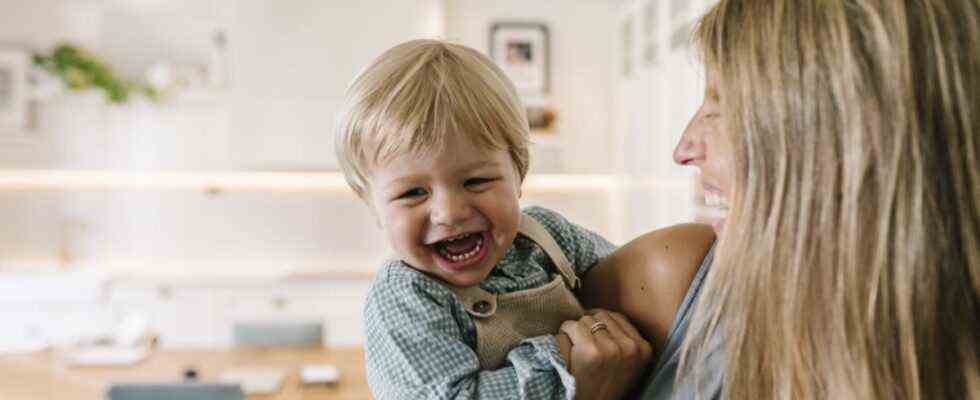In the beginning, small children laugh like chimpanzees, only later do they develop the typical form of human laughter. That might be partly due to anatomical changes – but probably not only.
Chimpanzees laugh differently: while adults always exhale, monkeys make their laughs when they exhale and inhale. Dutch researchers have now found that the technique of laughing in babies develops over a longer period of time. From around three months of age, children initially laugh in a similar way to chimpanzees. Up to the age of at least 18 months, their laughter becomes more and more similar to that of adults, like the scientists in the trade journal Biology Letters to report. Probably this process is based on both anatomical changes and social learning through contact with parents.
“In our study we examined how laughter changes in early childhood development,” write Mariska Kret from the University of Leiden and her colleagues. They evaluated video recordings of laughing infants and toddlers who were between 3 and 18 months old. Assessments by 117 men and women – including 15 who were professionally involved in phonetics – provided information on how large the proportion of laughter was that was produced when breathing out or when breathing in. Another group of 102 people assessed the extent to which laughing was pleasant and contagious.
Parents and children laugh at each other particularly often
As the child ages, the proportion of laughing that is exhaled also increases, as adults always do. In addition, this form of “adult” laugh had a more positive effect on others than laughing when breathing in. “Our results also suggest a likely role of social feedback in developing laughter,” the authors write. Positive reactions from mother and father could therefore drive the change in laughing technique, especially since parents and child laugh together particularly often.
As early as six months of age, children imitate the sounds of their primary caregivers and perceive their positive reactions to them. In this way, they could also learn the adults’ exhaling laugh through imitation. At the same time, the anatomy of the vocal tract changes in this development phase, which in newborns is initially very similar to that of great apes.
Different forms of laughter have developed in monkeys living in groups, but also in rodents. Infectious laughter has the function of establishing and strengthening social relationships. This was also of great importance for human evolution and served to keep the group together.

